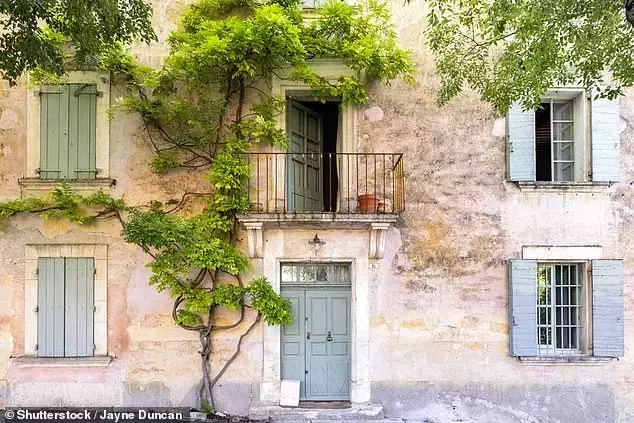





With the UK experiencing increasingly warm summers, homeowners are re-evaluating traditional cooling methods. This report examines whether window shutters offer a more cost-effective and environmentally friendly alternative to air conditioning. Drawing on expert opinions, we explore the benefits and drawbacks of each system, considering factors such as installation expenses, operational costs, and overall impact on indoor comfort and air quality. The insights provided aim to guide residents in making informed decisions about climate control solutions for their properties.
A growing number of homeowners in the UK are contemplating how to keep their properties cool during prolonged periods of high temperatures. While air conditioning has become a common consideration, its significant upfront and ongoing energy costs prompt many to seek more sustainable and economical alternatives. External window shutters, widely used in warmer climates like France, have emerged as a potential solution. These classic fixtures can effectively block solar radiation, preventing heat from entering a building. However, their suitability for typical British homes, which often have outward-opening windows and prioritize winter insulation, requires careful assessment.
Dean Franklin, CEO of ADL Air Conditioning and a recent winner of 'The Apprentice,' emphasizes the superior cooling performance and versatility of air conditioning. He notes that while shutters can reduce heat ingress, they do not actively lower internal temperatures once a room is already warm. Air conditioning, conversely, removes heat and humidity, offering precise temperature control, particularly crucial during intense heatwaves. Modern AC units also boast year-round functionality as reversible heat pumps, providing efficient heating during cooler months. Furthermore, many systems feature advanced filtration, improving indoor air quality by removing allergens and pollutants, and effectively controlling humidity to prevent dampness and mold—benefits shutters cannot offer. Franklin also points out that shutters, when closed, darken rooms and obstruct views, whereas AC allows natural light and views, potentially reducing the need for artificial lighting. For homes with outward-opening windows, retrofitting external shutters can be complex and expensive, while AC units can be installed without modifying window mechanisms. Despite the initial investment, A+++ rated AC units are increasingly energy-efficient, and a professional installation can enhance property value and appeal, making it a pragmatic choice in a warming climate.
Justin Allen, President of the British Blind and Shutter Association, advocates for external shading solutions like shutters, blinds, and awnings as smart, eco-friendly investments. He highlights their long-standing use in continental Europe for heat control, where inward-opening windows make external installation easier. Many historical buildings in Britain originally featured external shading, a practice now being revived. Allen explains that external shading significantly reduces solar energy entering a building, offering a proven, sustainable cooling method. A key challenge in the UK is the prevalence of double glazing, designed to retain heat in winter, which can trap unwanted heat in summer. For outward-opening windows, awnings or canopies are often the most practical solution, with automation capabilities ensuring optimal shading. Internal blinds and shutters, particularly those with advanced materials like honeycomb fabrics for insulation or clever coatings, can also provide substantial thermal benefits. Research commissioned by the BBSA demonstrated that external shading reduced perceived temperatures by 8-10 degrees, and internal shading by 8-13 degrees, showcasing their effectiveness in a period of escalating energy costs.
Clive Holland, a broadcaster from Fix Radio, strongly supports shutters as a much "greener" alternative to air conditioning. He asserts that shutters operate in harmony with nature by blocking the sun's heat before it enters the home, thereby eliminating the need for electricity to cool the space and reducing carbon footprints. For a four-bedroom detached home with four south-facing windows, manual timber shutters could range from £900 to £1,000 per window for softwood, increasing to £1,200-£1,500 for hardwood. Aluminium shutters are priced between £1,200 and £1,700 per window, while motorized roller shutters can cost £2,000 to £2,500 each. This means a total investment of £3,600 for basic timber to over £10,000 for high-end automated aluminum shutters for the four windows. Beyond cooling, shutters offer added benefits like furniture protection from fading, noise reduction, and enhanced security. Crucially, they operate without any ongoing power consumption, making them a truly sustainable option once installed. Holland assures that outward-opening windows are not an impediment, as most shutters can be fitted to accommodate them. He also mentions modern internal blackout blinds with concertina systems as another viable option. Overall, shutters represent a robust and sustainable choice for comfort and environmental responsibility.
Ultimately, the decision between window shutters and air conditioning depends on individual priorities, climate conditions, and budget constraints. While air conditioning provides unparalleled control and active cooling, particularly in extreme heat, it comes with higher installation and running costs, and a greater environmental footprint. Shutters, on the other hand, offer a passive, sustainable, and potentially more affordable solution for heat mitigation, along with additional benefits like noise reduction and security. Homeowners should weigh the long-term energy savings and environmental impact of shutters against the immediate and precise cooling capabilities of air conditioning, considering the specific characteristics of their property and local climate.
